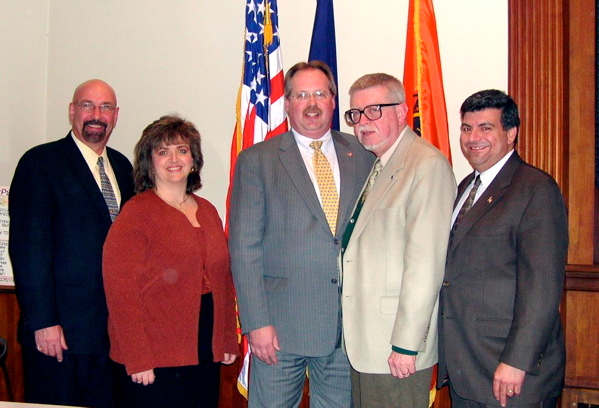East Rockaway unveils 2010-11 budget plan
Residents would pay average of $170 more in taxes
“Trust me, this weighs heavy on my mind.”
That was East Rockaway Trustee Irene Villacci’s thought on the village’s tentative $8.9 million 2010-11 budget — and in particular its near 7 percent tax levy increase — which the village unveiled at Monday’s board meeting. Officials vowed to pare down the tax levy over the next two weeks, with the final budget due by April 30. As it stands, the average homeowner would pay an additional $170 in village taxes.
“This is not satisfactory to anyone sitting up here this evening,” Mayor Ed Sieban said of the tax levy increase. The increase in this year’s budget was approximately 3.5 percent this year.
According to Village Administrator John Mirando, the proposed budget is 1.59 percent larger than the current spending plan, but mandated increases in pension costs, health benefits and workers’ compensation insurance are the reasons for the jump in the tax levy. Pension costs increased by 64 percent, Mirando said, and the Metropolitan Transportation Authority payroll tax cost the village $20,000. Given those costs, as well as an $80,000 drop in mortgage tax revenue — down 40 percent from this year — and a 47 percent decrease in building permit fees, the village had to find new ways to increase revenue.
“People are not buying homes or repairing them any more,” Trustee Francis Lenahan said of the decrease in mortgage taxes and building permit fees. “But we’re going to get [the tax levy] down. I guarantee it.”
Mirando said that to increase revenue, village officials are considering increasing road-opening permits fees — paid when utility companies need to open a road for repairs — as well as increasing certain fines and adding more parking meters in the village.
The village managed to save money, he explained, by sharing some services with the school district and through its new garbage contract with Omni Recycling of Babylon, which saved $100,000.
“We entered into an agreement with the school where they use our fueling station, which saves them money, and they pay for part of the maintenance to our station,” Mirando said.






